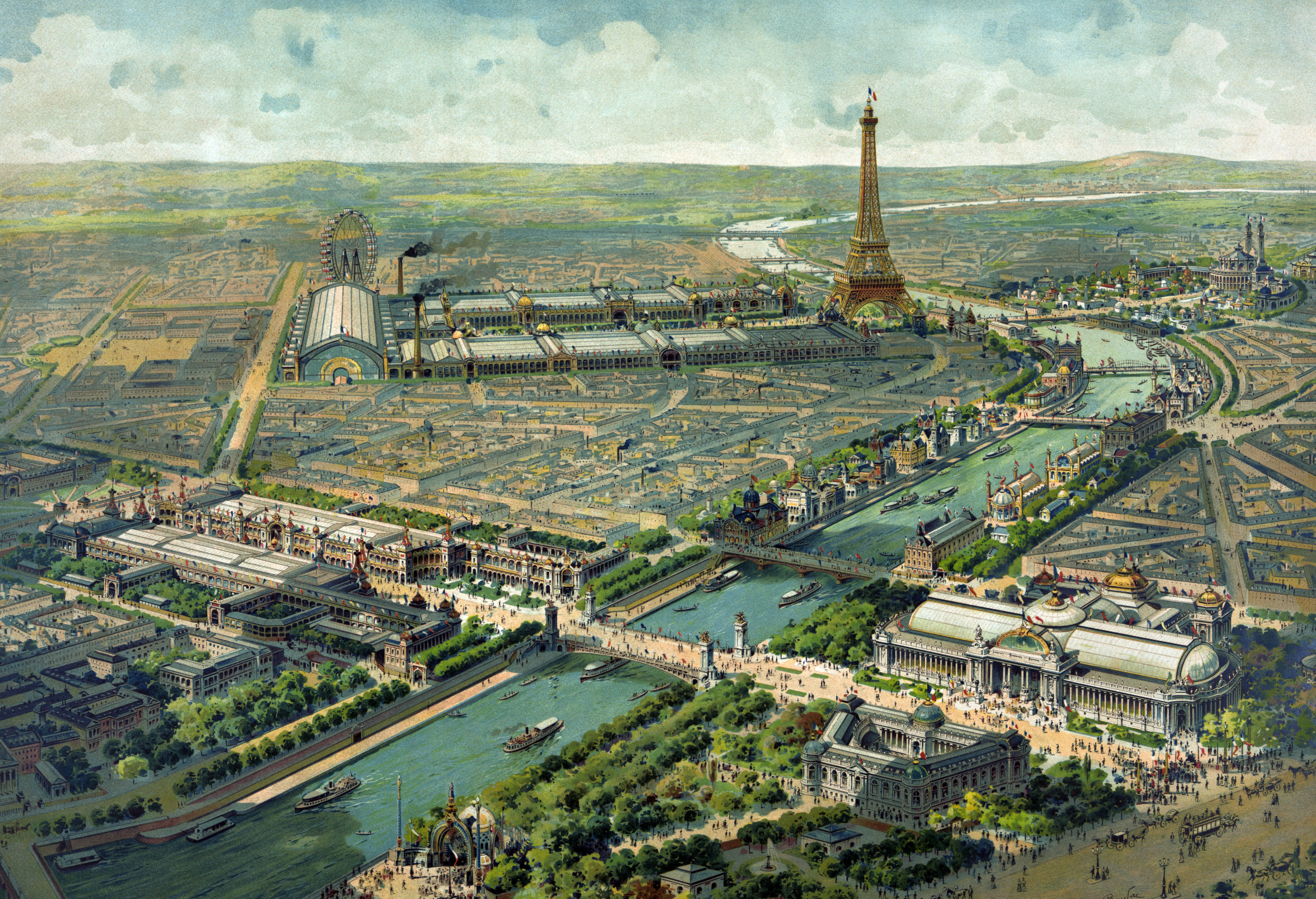Paris Exposition, 1900 (film Series) on:
[Wikipedia]
[Google]
[Amazon]
''Paris Exposition, 1900'' (french: Vues spéciales de l'Exposition de 1900) was a series of seventeen short French silent
 The following list includes the original French title and the English release title (note that English-language catalogs preceded each title with the series name and a dash, e.g. ''Paris Exposition, 1900—The Moving Sidewalk''), as well the numbers assigned to the films in Méliès's Star Film Company catalogs.
The following list includes the original French title and the English release title (note that English-language catalogs preceded each title with the series name and a dash, e.g. ''Paris Exposition, 1900—The Moving Sidewalk''), as well the numbers assigned to the films in Méliès's Star Film Company catalogs.
actuality film
The actuality film is a non-fiction film genre that, like the documentary film, uses footage of real events, places, and things. Unlike the documentaries, actuality films are not structured into a larger argument, picture of the phenomenon or coh ...
s made in 1900 by Georges Méliès
Marie-Georges-Jean Méliès (; ; 8 December 1861 – 21 January 1938) was a French illusionist, actor, and film director. He led many technical and narrative developments in the earliest days of cinema.
Méliès was well known for the use of ...
. The series was a documentary record of the 1900 Exposition Universelle in Paris.
Summary
Main series
 The following list includes the original French title and the English release title (note that English-language catalogs preceded each title with the series name and a dash, e.g. ''Paris Exposition, 1900—The Moving Sidewalk''), as well the numbers assigned to the films in Méliès's Star Film Company catalogs.
The following list includes the original French title and the English release title (note that English-language catalogs preceded each title with the series name and a dash, e.g. ''Paris Exposition, 1900—The Moving Sidewalk''), as well the numbers assigned to the films in Méliès's Star Film Company catalogs.
Related films
In addition to the ''Paris Exposition, 1900'' series proper, Méliès also sold two films, filmed on the River Seine in 1899, showing pre-opening work progressing on Exposition buildings on both sides of the river. These two films were released separately in France but were sold together as a continuous film (numbered 232–233) in English-speaking catalogs. Like the main series, these films were each 20 meters long.Production
Méliès traveled at least twice to the Paris Exposition for his shots, filming architectural views early in the exposition year and shots of the ongoing exposition later on. He employed various techniques to achieve his views, shooting variously from stationary vantage points, from the Exposition's moving sidewalk, from the River Seine, and from an electric train. The circular panoramas of thePalais des Beaux Arts
The Centre for Fine Arts (french: Palais des Beaux-Arts, nl, Paleis voor Schone Kunsten) is a multi-purpose cultural venue in Brussels, Belgium. It is often referred to as BOZAR (a homophone of ''Beaux-arts'') in French or PSK in Dutch. The ...
, Les Invalides
The Hôtel des Invalides ( en, "house of invalids"), commonly called Les Invalides (), is a complex of buildings in the 7th arrondissement of Paris, France, containing museums and monuments, all relating to the military history of France, as ...
, the Champs de Mars
The Champ de Mars (; en, Field of Mars) is a large public Urban open space, greenspace in Paris, France, located in the 7ème arrondissement, Paris, seventh ''arrondissement'', between the Eiffel Tower to the northwest and the École Militaire ...
, Trocadéro
The Trocadéro (), site of the Palais de Chaillot, is an area of Paris, France, in the 16th arrondissement, across the Seine from the Eiffel Tower. It is also the name of the 1878 palace which was demolished in 1937 to make way for the Palais ...
, and the Pont d'Iéna
Pont d'Iéna ("Jena Bridge") is a bridge spanning the River Seine in Paris. It links the Eiffel Tower on the Left Bank to the district of Trocadéro on the Right Bank.
History
In 1807, by an imperial decree issued in Warsaw, Napoleon I orde ...
were made by placing the camera on a specially built Gaumont turning platform.
Though unconnected to Méliès's enterprise, another early filmmaker, the Edison Manufacturing Company
The Edison Manufacturing Company, originally registered as the United Edison Manufacturing Company and often known as simply the Edison Company, was organized by inventor and entrepreneur Thomas Edison and incorporated in New York City in May 188 ...
producer James Henry White, also filmed scenes from the Exposition in July 1900. White's camera was equipped with a newly designed panning-head tripod, allowing for numerous panoramas from stationary vantage points.
Status
The Méliès scholar John Frazer reported in 1979 that the ''Paris Exposition, 1900'' series survived in a private collection, but a 2008 Méliès filmography prepared by Jacques Malthête labels all seventeen films, as well as the two earlier films showing work in progress, to be presumedlost
Lost may refer to getting lost, or to:
Geography
*Lost, Aberdeenshire, a hamlet in Scotland
* Lake Okeechobee Scenic Trail, or LOST, a hiking and cycling trail in Florida, US
History
*Abbreviation of lost work, any work which is known to have bee ...
.
References
{{1900 Paris Exposition Films directed by Georges Méliès 1900 films French silent short films Articles containing video clips French black-and-white films Exposition Universelle (1900)